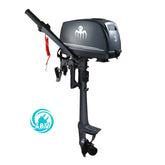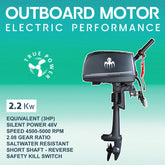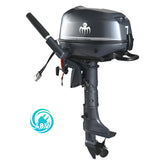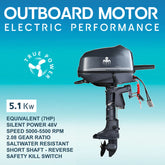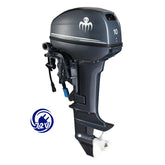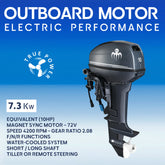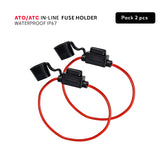Marine Energy & Battery Management Calculator for Boats
Energy Consumption and Recovery Calculator for Boats
This comprehensive calculator helps boat owners estimate their daily energy usage and determine the optimal battery capacity and charging requirements for their marine electrical systems. Whether you're planning a weekend cruise or living aboard full-time, understanding your energy consumption is crucial for managing battery capacity and power sources effectively.
Essential Tool: Battery Monitoring with Coulometers
Accurate energy calculations are just the beginning. To effectively manage your marine electrical system, you need real-time monitoring of your battery's state of charge. A coulometer is essential equipment for any serious boater.
How to Use This Calculator
- Intermittent Devices: Add appliances you use for specific hours per day (lights, pumps, electronics).
- Always-On Devices: Include equipment that runs continuously (refrigeration, monitoring systems).
- Energy Recovery: Enter your charging sources (solar panels, alternators, shore power).
- Battery Capacity: Add your battery bank specifications (voltage and amp-hours).
- Review Report: Analyze your energy balance and battery runtime calculations.
Note before use: Use '.' not ',' when entering time values (e.g., 6 minutes = 0.1 hours).
Intermittent Devices - Daily Use
| Device Name | Power (W) | Hours per Day | Total (Wh) |
|---|
Always-On Devices
| Device Name | Power (W) | Total (Wh/Day) |
|---|
Energy Recovery
| Charger Name | Power (W) | Hours per Day | Total (Wh) |
|---|
Battery Capacity
| Select Battery | Voltage (V) | Capacity (Ah) | Total (Wh) |
|---|
Report
| Metric | Value |
|---|---|
| Total Always-On Consumption | --- |
| Total Intermittent Consumption per Day | --- |
| Battery Operational Time (hours until empty) | --- |
| Time to Recharge from 0 to 100% | --- |
| Average Daily Energy Production | --- |
| Peak Power Demand | --- |
| Energy Balance | --- |
How the Energy Calculator Works
Calculation Methods
Intermittent Device Consumption: Total Watt-hours per day is calculated by multiplying Power (Watts) by Hours per Day. For example, a 20W LED light used for 4 hours consumes 80 Wh daily.
Always-On Device Consumption: These devices run continuously, so their daily consumption equals Power (Watts) × 24 hours. A 5W chart plotter left on 24/7 consumes 120 Wh daily.
Battery Capacity: Calculated as Voltage (V) × Capacity (Ah) = Total Wh. A 12V 100Ah battery provides 1200 Wh of storage capacity.
Energy Recovery: Charging systems are calculated the same as intermittent devices - Power (Watts) × Hours of Operation per day.
Practical Examples and Use Cases
Weekend Sailor Setup
Typical Equipment: LED navigation lights (20W for 8 hours), VHF radio (6W for 2 hours), chart plotter (15W for 6 hours), cabin lights (30W for 3 hours)
Daily Consumption: ~395 Wh
Recommended Battery: 12V 100Ah (1200 Wh) for 3+ days autonomy
Live-Aboard Cruiser Setup
Always-On Equipment: Refrigeration (60W), anchor light (3W), monitoring systems (5W)
Intermittent Use: Water pump (60W for 0.5 hours), laptop (65W for 4 hours), lighting (40W for 5 hours)
Daily Consumption: ~2100 Wh
Charging Requirements: 300W solar array or substantial alternator charging
Frequently Asked Questions
What is a Watt-hour (Wh) and how does it differ from Watts?
Watts measure instantaneous power consumption, while Watt-hours measure energy consumed over time. A 10W device running for 5 hours consumes 50 Wh. This is the key metric for calculating daily energy needs and battery capacity requirements.
How do I choose the right battery capacity for my boat?
Your battery bank should provide at least 2-3 days of autonomy without charging. Calculate your daily consumption in Wh, multiply by your desired days of independence, then add 20% safety margin. Remember that lead-acid batteries shouldn't be discharged below 50%, so double the calculated capacity for these battery types.
What's the difference between intermittent and always-on appliances?
Intermittent appliances are used for specific periods (lights, pumps, electronics during operation), while always-on devices run continuously (refrigeration, anchor lights, monitoring systems). Always-on devices consume their rated power × 24 hours per day, making them significant contributors to total energy consumption.
How much solar power do I need for my boat?
Solar panel requirements depend on your daily energy consumption and available sunlight hours. In optimal conditions, expect 4-6 hours of effective charging per day. Divide your daily Wh consumption by effective sun hours to determine minimum solar wattage needed.
Why is battery monitoring important for marine applications?
Unlike shore power systems, marine batteries operate in a finite capacity environment. Without accurate monitoring, you risk over-discharge, reduced battery life, or complete power failure at sea. A coulometer provides real-time tracking of energy flow, state of charge, and remaining capacity.
Related Marine Electrical Resources
- Professional Battery Monitoring Solutions: Take your energy management to the next level with our Coulometer 0-350A OLED Monitor. This precision instrument provides real-time battery monitoring with high-resolution OLED display, supporting 8-80V systems up to 350A.
- Essential Reading: Battery Monitoring Guide – Understanding your calculations is just the first step. Our comprehensive guide explains why battery monitoring is non-negotiable for modern marine electrical systems and how to implement effective monitoring strategies.
-
Marine Battery Management Best Practices:
- Size your battery bank for 2-3 days autonomy minimum
- Install a quality battery monitor or coulometer for precise state-of-charge tracking
- Plan charging capacity to replenish daily consumption plus 20% margin
- Consider battery chemistry (lead-acid, AGM, lithium) depth-of-discharge limitations
- Implement proper charging protocols to maximize battery lifespan
